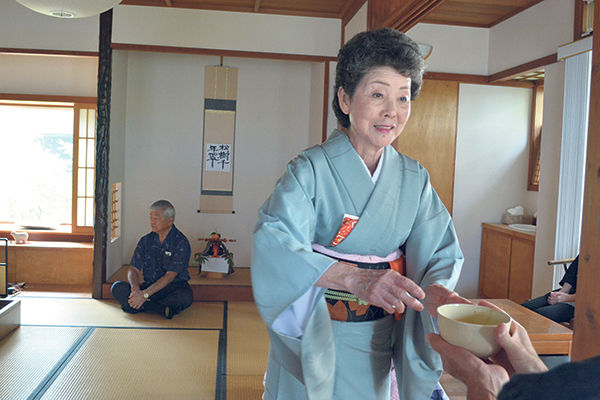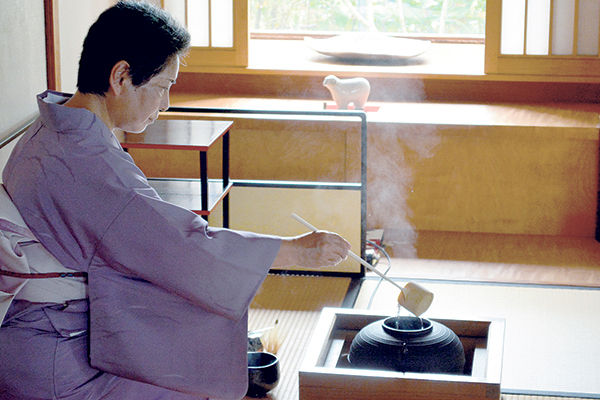In the Japanese culture, the first tea ceremony of the new year is call “hatsugama.” Such a ceremony was held Saturday at the Lihue home of Sachi Grollman. It was put on by the Urasenke Tankokai Kauai Association. It is
In the Japanese culture, the first tea ceremony of the new year is call “hatsugama.”
Such a ceremony was held Saturday at the Lihue home of Sachi Grollman. It was put on by the Urasenke Tankokai Kauai Association.
It is a celebration of life and spirit, hope for growth, good fortune and discipline of the mind going into the new year.
Twelve people came together as a family group. Most wore kimonos and, seated in a comfortable, quiet room, participated in the 30-minute, intimate ceremony. It is, said Sachi Grollman, an important time for a tea maker (the hostess) and guests as they go through the celebration during which they drank green tea and ate some sweets, one in the shape of the lamb to symbolize the year of the lamb.
The ceremony is held in January and is a longtime Japanese custom. The setting is simple, with a single camelia flower and houraisan (a decoration for celebration of the new year) on display.
“It is quite an honor to be invited as a guest,” Sachi Grollman said.
The ceremony was followed by a meal of specially prepared dishes that included cooked black beans, kelp rolls, mashed sweet potatoes, burdock root, fish cake, lotus root and dried sardines, herring roe and prawns. They are symbolic of health, good harvest, happiness, fertility, prosperity, long life and good luck.
Each year the ceremony is shared, it is for the first time. The occasion can never repeat itself. Even if the same people gather in the same setting, it will be different.
“Each is the first time and maybe the last time. Who knows, “ Sachi said. “So you enjoy the moment to the max.”
Hiroko Merritt was pleased to be part of such a ceremony, which began in the 1600s.
“In Japanese culture, beginning and end is very important,” she said.




